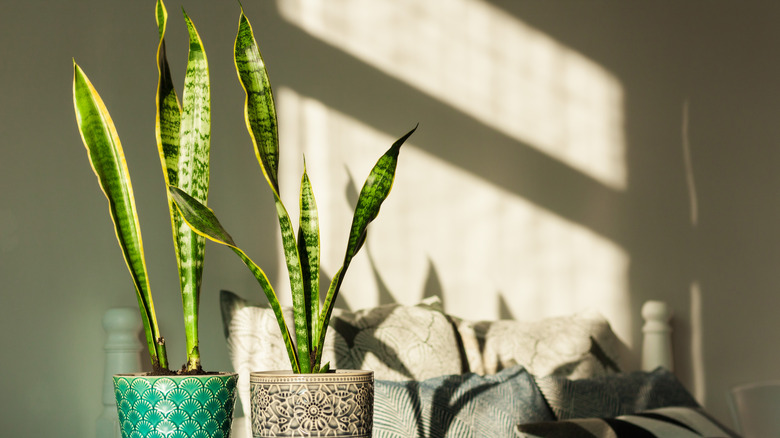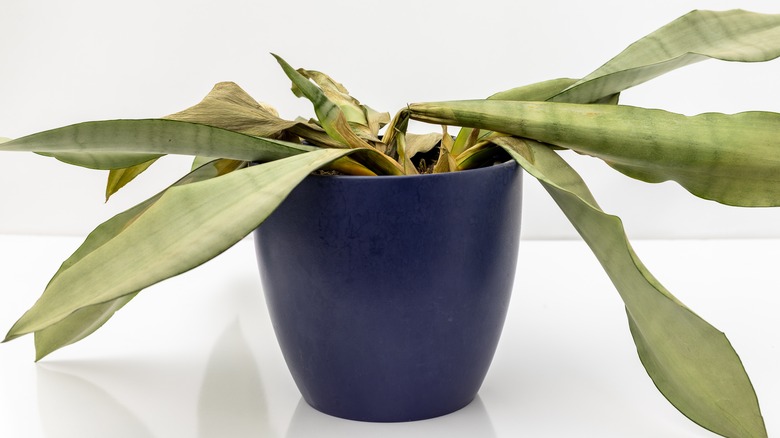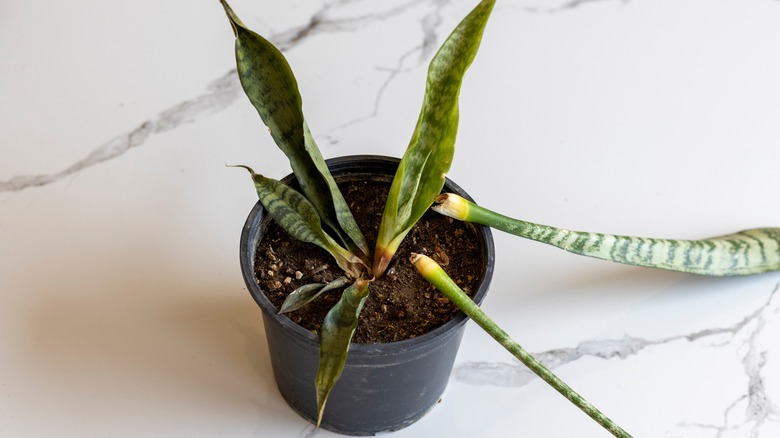What Your Snake Plant's Yellow Leaves Are Trying To Tell You & How You Can Fix It
Finding yellow leaves on your indoor plants can be seriously troubling for plant lovers. It's like your green buddies are dropping hints, but it's a mystery novel, and you're the detective trying to figure out what's gone wrong. Are they not getting enough nutrients, drowning in water, or just craving more sunshine? The frustration kicks in because you've invested time and love into these leafy pals, and now you're on a mission to play plant doctor. It's not just about looks; it's worrying about the well-being of your little green roommates. And, while you can simply trim the yellowing leaves away, not resolving the problem will only lead to more withering fronds and potentially a dead plant. One particularly difficult plant to diagnose is a snake plant.
Caring for a snake plant and pinpointing why its leaves turn yellow can be a head-scratcher. These resilient plants usually thrive on neglect, but yellowing may signify diverse issues — overwatering, underwatering, low light, or even soil problems are just some of the telltale signs that your snake plant is in trouble. The challenge lies in their stoic nature, as symptoms may appear late, making it hard to identify the root cause. Factors like inconsistent watering habits and environmental changes add to the puzzle. Additionally, various species have different needs. Decoding the yellow leaf mystery requires thoughtfulness around your care routines to ultimately determine what may be causing your snake plant's stress.
What's causing the yellowing leaves
Yellowing leaves on a snake plant can be attributed to a variety of causes, each signaling distinct issues that require attention. Overwatering is a common culprit. If the leaves are yellow and feel soft or mushy, it indicates that the roots might be waterlogged, leading to root rot. Conversely, underwatering is another potential cause. If the yellow leaves are dry and crispy, it suggests the plant is not receiving sufficient water.
Insufficient light is also a key factor in snake plant yellowing. If the leaves are turning yellow, especially those at the bottom of the plant, and the overall growth is stunted, it indicates a lack of light. While snake plants can survive in lower-light settings, they do thrive in indirect sunlight.
Furthermore, issues with soil quality can contribute to yellowing. Poor soil drainage or nutrient deficiencies may manifest as yellow leaves. If the soil is compacted and waterlogged, repotting the snake plant with well-draining soil can enhance its overall health. Additionally, providing a balanced, diluted fertilizer can address nutrient deficiencies.
Lastly, temperature fluctuations can impact snake plants. Exposure to cold drafts or sudden temperature drops can lead to yellowing leaves. Ensuring the snake plant is placed in a stable, suitable temperature environment helps maintain its robust green foliage. Addressing these factors systematically allows plant owners to decipher the specific cause of yellowing leaves on their snake plants and take effective corrective measures.
How to remedy yellow leaves
The best way to remedy yellow leaves on a snake plant is to address the specific issue at hand. Though yellowing leaves cannot be saved, the remaining green ones can. Start by trimming away dead or dying leaves. From there, it's important to develop an appropriate watering schedule. For overwatered plants, allow the soil to dry out before watering again, ensuring the top inch is dry. Adjust the watering frequency, allowing the soil to dry between waterings. On the flip side, if the leaves are dry and yellow, increase the watering frequency, keeping the soil more consistently moist but not waterlogged. Consider the humidity of your home as well and how that may impact the time it takes to dry out between waterings.
Next, evaluate the plant's lighting conditions. If you have your plant in a dark space, move it to a brighter location, but avoid direct sunlight, as it can scorch the leaves. Finding the right balance between light and shade is crucial for the snake plant's well-being.
Finally, pest control is another important aspect to consider. Inspect the plant for pests, such as spider mites or mealybugs, which can contribute to yellowing. These bugs feed on the sap in the snake plant's leaves, causing them to yellow. If pests are present, isolate the plant to prevent the infestation from spreading. Treat the pests with insecticidal soap or neem oil, ensuring thorough coverage. Regularly inspect and clean the leaves to prevent further issues.


